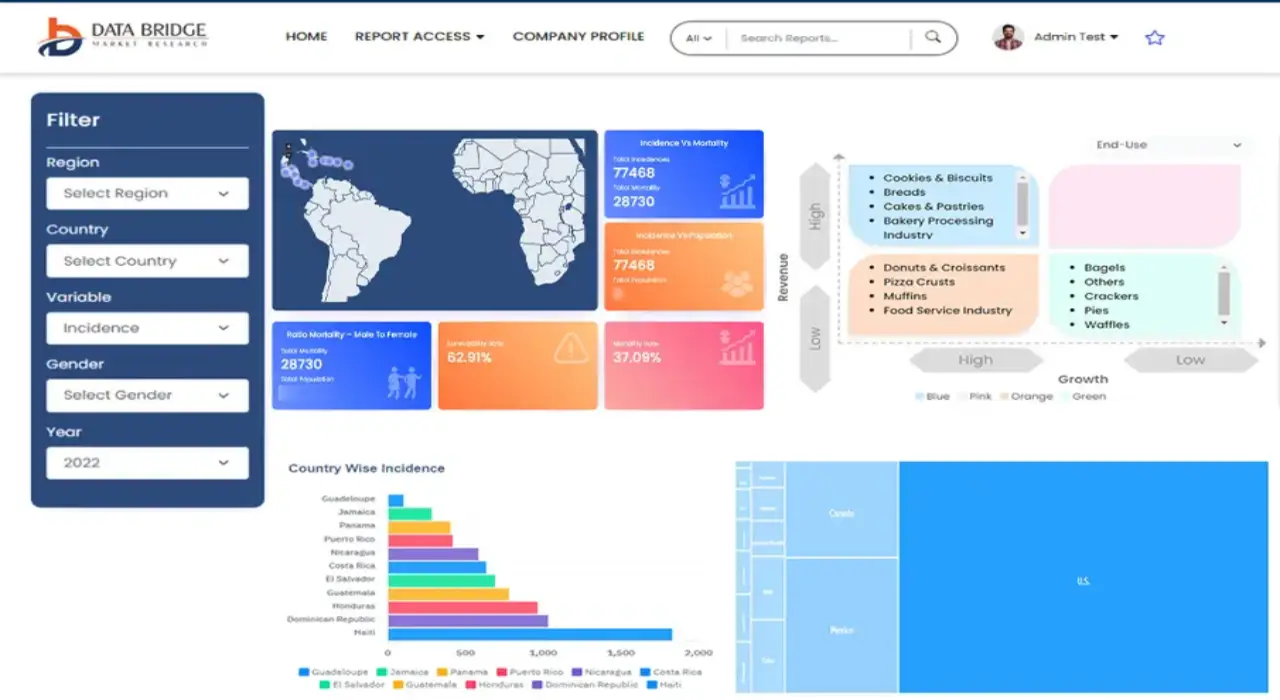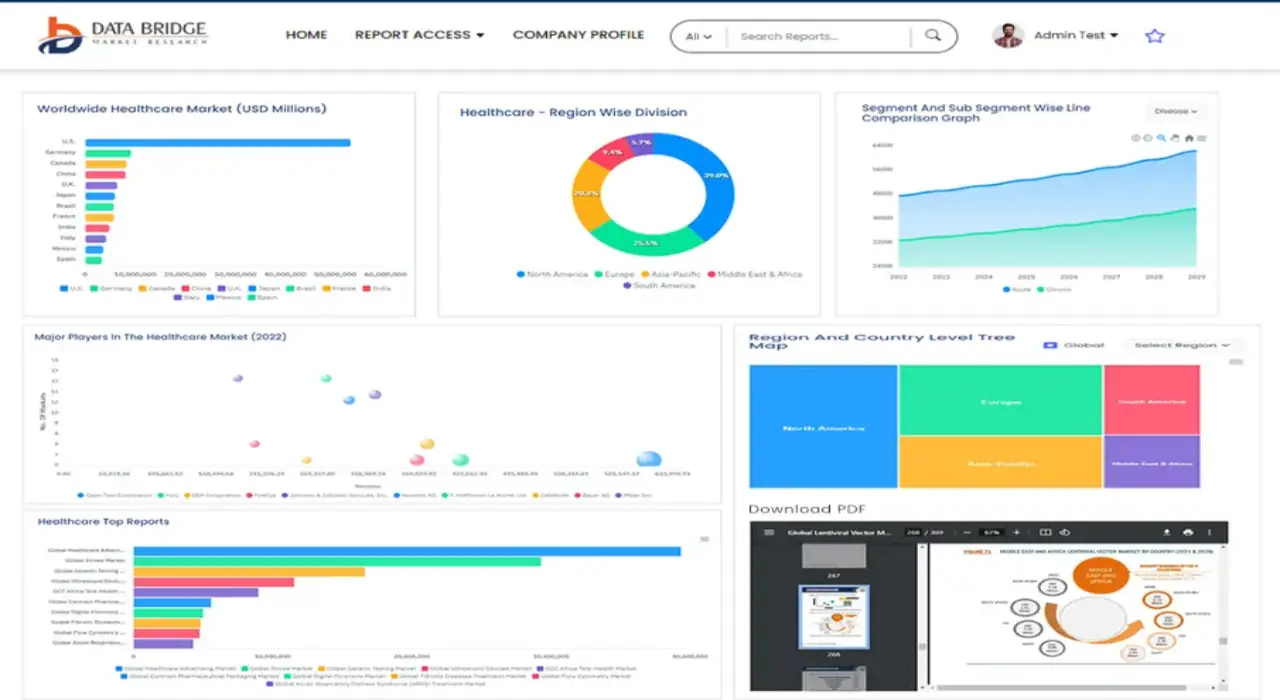Global Rhizobium Bacteria Fertilizers Market
Tamanho do mercado em biliões de dólares
CAGR :
% 
 USD
1.79 Billion
USD
3.37 Billion
2022
2030
USD
1.79 Billion
USD
3.37 Billion
2022
2030
| 2023 –2030 | |
| USD 1.79 Billion | |
| USD 3.37 Billion | |
|
|
|
>Global Rhizobium Bacteria Fertilizers Market, By Type (Nitrogen-Fixing, Phosphate-Solubilizing, Potash-Mobilizing, Others), Crop Type (Cereals and Grains, Pulses and Oilseeds, Fruits and Vegetables, Others), Form (Dispersible Granules, Pellets, Powders, Pure and Mixed Liquid Fermentations), Technology (Carrier Enriched Biofertilizers, Liquid Biofertilizers), Application (Seed Treatment, Soil Treatment, Others) – Industry Trends and Forecast to 2030.
Rhizobium Bacteria Fertilizers Market Analysis and Size
The augmented practice of organic farming and the growing demand for organic food are the two major factors which are expected to enhance the growth of the rhizobium fertilizer market. Moreover, the favourable policies which have implemented by the government for organic farming are augmenting the market growth. Nowadays, rhizobium-based fertilizer usage among farmers is limited. However, the recent initiatives taken by numerous regional authorities in setting up microbial research institutes are stimulating the market growth during the forecast period.
Data Bridge Market Research analyses that the rhizobium bacteria fertilizers market is expected to reach USD 3.37 billion by 2030, which is USD 1.79 billion in 2022, registering a CAGR of 8.20% during the forecast period of 2023 to 2030. In addition to the insights on market scenarios such as market value, growth rate, segmentation, geographical coverage, and major players, the market reports curated by the Data Bridge Market Research also include in-depth expert analysis, geographically represented company-wise production and capacity, network layouts of distributors and partners, detailed and updated price trend analysis and deficit analysis of supply chain and demand.
Rhizobium Bacteria Fertilizers Market Scope and Segmentation
|
Report Metric |
Details |
|
Forecast Period |
2023 - 2030 |
|
Base Year |
2022 |
|
Historic Years |
2021 (Customizable to 2015 - 2020) |
|
Quantitative Units |
Revenue in USD Billion, Volumes in Units, Pricing in USD |
|
Segments Covered |
Type (Nitrogen-Fixing, Phosphate-Solubilizing, Potash-Mobilizing, Others), Crop Type (Cereals and Grains, Pulses and Oilseeds, Fruits and Vegetables, Others), Form (Dispersible Granules, Pellets, Powders, Pure and Mixed Liquid Fermentations), Technology (Carrier Enriched Biofertilizers, Liquid Biofertilizers), Application (Seed Treatment, Soil Treatment, Others) |
|
Countries Covered |
U.S., Canada and Mexico in North America, Germany, France, U.K., Netherlands, Switzerland, Belgium, Russia, Italy, Spain, Turkey, Rest of Europe in Europe, China, Japan, India, South Korea, Singapore, Malaysia, Australia, Thailand, Indonesia, Philippines, Rest of Asia-Pacific (APAC) in the Asia-Pacific (APAC), Saudi Arabia, U.A.E, Israel, Egypt, South Africa, Rest of Middle East and Africa (MEA) as a part of Middle East and Africa (MEA), Brazil, Argentina and Rest of South America as part of South America |
|
Market Players Covered |
Yara (Norway), Nutrien Ltd (Canada)., EuroChem Group (Switzerland), Lallemand Inc (Canada), AUMGENE Biosciences (India), CF Industries Holdings Inc. (U.S.), PJSC (Russia), Koch Ag & Energy Solutions, LLC (U.S.), Vegalab S.A (Switzerland), Sinofert Holdings Limited (China), Seipasa (Spain), Coromandel International Limited (India), CRIYAGEN (India), Symborg (Spain), and URALCHEM JSC (Russia) |
|
Market Opportunities |
|
Market Definition
Rhizobium bacteria fertilizers are bio-fertilizer that comprises Acetobacter bacteria which has the capability to fixing atmospheric nitrogen and colonize the plant roots. It is particularly beneficial for sugarcane plantation because it activates the soil biologically and also stimulates plant growth. Rhizobium is a bacterium which has found in soil that aids in fixing nitrogen in leguminous plants. It combines to the roots of leguminous plant and then produces nodules. These nodules fix atmospheric nitrogen and then convert it into ammonia which can be used by the plant for its development and growth.
Global Rhizobium Bacteria Fertilizers Market Dynamics
Drivers
- Growing need for alternatives to chemical fertilizers
The demand for rhizobium bacteria fertilizers is increasing globally owing to growing adoption of organic food globally. Rhizobium bacteria fertilizers are bio-fertilizers which entails properties that upsurges the level of level of phosphorus and nitrogen in plants more naturally than other fertilizers by restoring its normal fertility. Additionally, rhizobium bacteria fertilizers also boost soil quality and texture, which aids plants grow better during severe conditions. Furthermore, bio-fertilizers are easy-to-use and cheap alternatives to manufactured petrochemical products. Moreover, the usage of rhizobium bacteria fertilizers in agricultural fields considerably aids in the decomposition of organic residue and overall development of crops and plants. Hence, the factors mentioned above are favouring the market growth globally.
- Growing organic farm land
The increase in demand for organic products is flourishing, owing to the rise in conscientious consumers and increasing incomes with improved farming activities, which make organic yields more robust. As a result of this, the growing demand for organic food has augmented the area under organic farming worldwide. For instance, according to the FiBL analysis, the area under global organic farming increased from 69.4 million hectares in 2017 to 74.9 million in 2020. The rise in organic farming activities is due to improved soil fertility with the wide use of organic products such as nitrogen-fixing fertilizers. This has further triggered the demand for nitrogen fixing fertilizers products, as they are bio fertilizers and help in maintaining the ecological balance.
Opportunities
- Increased practice of organic farming
According to the Organic Trade Association, around 82% of households purchase organic food in the United States. The organic food market in India has been registering a healthy growth rate. The increase in demand for organic products is booming nowadays, not only owing to an upsurge in conscientious among consumers, but also owing to growing incomes, coupled with increased farming practices that make the organic yields more robust. As a result of this, the growing demand for organic food, has augmented the area under organic farming globally. The Common Agricultural Policy restricts and limits the usage of synthetic fertilizers, whereas promoting the usage of fertilizers and organic farming which eventually increase the demand for the rhizobium bacteria fertilizers in the market. The area under organic farming augmented from 58.1 million hectares in 2016 to 71.4 million hectares in 2018 due to the augmented usage of rhizobium fertilizers in recent years. Therefore, increased practice of organic farming is anticipated to create immense opportunities for the growth of the market.
Restraints/ Challenges
- Multiple issues associated with rhizobium bacteria fertilizers
The high production price and the low shelf life of rhizobium bacteria fertilizers are expected to limit the growth of the rhizobium bacteria fertilizers market during the forecast period, whereas the increase in the concerns regarding the environmental issues will act as biggest and foremost challenge for the growth of the targeted market during the forecast period of 2023-2030.
This rhizobium bacteria fertilizers market report provides details of new recent developments, trade regulations, import-export analysis, production analysis, value chain optimization, market share, impact of domestic and localized market players, analyses opportunities in terms of emerging revenue pockets, changes in market regulations, strategic market growth analysis, market size, category market growths, application niches and dominance, product approvals, product launches, geographic expansions, technological innovations in the market. To gain more info on the rhizobium bacteria fertilizers market contact Data Bridge Market Research for an Analyst Brief, our team will help you take an informed market decision to achieve market growth.
Impact and Current Market Scenario of Raw Material Shortage and Shipping Delays
Data Bridge Market Research offers a high-level analysis of the market and delivers information by keeping in account the impact and current market environment of raw material shortage and shipping delays. This translates into assessing strategic possibilities, creating effective action plans, and assisting businesses in making important decisions.
Apart from the standard report, we also offer in-depth analysis of the procurement level from forecasted shipping delays, distributor mapping by region, commodity analysis, production analysis, price mapping trends, sourcing, category performance analysis, supply chain risk management solutions, advanced benchmarking, and other services for procurement and strategic support.
Expected Impact of Economic Slowdown on the Pricing and Availability of Products
When economic activity slows, industries begin to suffer. The forecasted effects of the economic downturn on the pricing and accessibility of the products are taken into account in the market insight reports and intelligence services provided by DBMR. With this, our clients can typically keep one step ahead of their competitors, project their sales and revenue, and estimate their profit and loss expenditures.
Global Rhizobium Bacteria Fertilizers Market Scope
The rhizobium bacteria fertilizers market is segmented on the basis of type, crop type, form, technology and application. The growth amongst these segments will help you analyze meagre growth segments in the industries and provide the users with a valuable market overview and market insights to help them make strategic decisions for identifying core market applications.
Type
- Nitrogen-Fixing
- Phosphate-Solubilizing
- Potash-Mobilizing
- Others
Crop Type
- Cereals and Grains
- Pulses and Oilseeds
- Fruits and Vegetables
- Others
Form
- Dispersible Granules
- Pellets, Powders
- Pure and Mixed Liquid Fermentations
Technology
- Carrier Enriched Biofertilizers
- Liquid Biofertilizers
Application
- Seed Treatment
- Soil Treatment
- Others
Rhizobium Bacteria Fertilizers Market Regional Analysis/Insights
The rhizobium bacteria fertilizers market is analyzed and market size insights and trends are provided by country, type, crop type, form, technology and application as referenced above.
The countries covered in the rhizobium bacteria fertilizers market report are U.S., Canada and Mexico in North America, Germany, France, U.K., Netherlands, Switzerland, Belgium, Russia, Italy, Spain, Turkey, Rest of Europe in Europe, China, Japan, India, South Korea, Singapore, Malaysia, Australia, Thailand, Indonesia, Philippines, Rest of Global (APAC) in the Global (APAC), Saudi Arabia, U.A.E, Israel, Egypt, South Africa, Rest of Middle East and Africa (MEA) as a part of Middle East and Africa (MEA), Brazil, Argentina and Rest of South America as part of South America.
North America is expected to dominate the rhizobium bacteria fertilizers market in terms of revenue and market share because of the increasing government interventions in farming practices in this region.
Asia-Pacific is anticipated to be the fastest growing region in rhizobium bacteria fertilizers market during the forecast period of 2023-2030 because of the increase in the emphasis on organic agriculture coupled with the high population in this region.
The country section of the report also provides individual market impacting factors and changes in market regulation that impact the current and future trends of the market. Data points like down-stream and upstream value chain analysis, technical trends and porter's five forces analysis, case studies are some of the pointers used to forecast the market scenario for individual countries. Also, the presence and availability of global brands and their challenges faced due to large or scarce competition from local and domestic brands, impact of domestic tariffs and trade routes are considered while providing forecast analysis of the country data.
Competitive Landscape and Rhizobium Bacteria Fertilizers Market Share Analysis
The rhizobium bacteria fertilizers market competitive landscape provides details by competitor. Details included are company overview, company financials, revenue generated, market potential, investment in research and development, new market initiatives, global presence, production sites and facilities, production capacities, company strengths and weaknesses, product launch, product width and breadth, application dominance. The above data points provided are only related to the companies' focus related to rhizobium bacteria fertilizers market.
Some of the major players operating in the rhizobium bacteria fertilizers market are:
- Yara (Norway)
- Nutrien Ltd (Canada)
- EuroChem Group (Switzerland)
- Lallemand Inc (Canada)
- AUMGENE Biosciences (India)
- CF Industries Holdings Inc. (U.S.),
- PJSC (Russia)
- Koch Ag & Energy Solutions, LLC (U.S.)
- Vegalab S.A (Switzerland)
- Sinofert Holdings Limited (China)
- Seipasa (Spain)
- Coromandel International Limited (India)
- CRIYAGEN (India), Symborg (Spain), and URALCHEM JSC (Russia)
SKU-
Obtenha acesso online ao relatório sobre a primeira nuvem de inteligência de mercado do mundo
- Painel interativo de análise de dados
- Painel de análise da empresa para oportunidades de elevado potencial de crescimento
- Acesso de analista de pesquisa para personalização e customização. consultas
- Análise da concorrência com painel interativo
- Últimas notícias, atualizações e atualizações Análise de tendências
- Aproveite o poder da análise de benchmark para um rastreio abrangente da concorrência
Metodologia de Investigação
A recolha de dados e a análise do ano base são feitas através de módulos de recolha de dados com amostras grandes. A etapa inclui a obtenção de informações de mercado ou dados relacionados através de diversas fontes e estratégias. Inclui examinar e planear antecipadamente todos os dados adquiridos no passado. Da mesma forma, envolve o exame de inconsistências de informação observadas em diferentes fontes de informação. Os dados de mercado são analisados e estimados utilizando modelos estatísticos e coerentes de mercado. Além disso, a análise da quota de mercado e a análise das principais tendências são os principais fatores de sucesso no relatório de mercado. Para saber mais, solicite uma chamada de analista ou abra a sua consulta.
A principal metodologia de investigação utilizada pela equipa de investigação do DBMR é a triangulação de dados que envolve a mineração de dados, a análise do impacto das variáveis de dados no mercado e a validação primária (especialista do setor). Os modelos de dados incluem grelha de posicionamento de fornecedores, análise da linha de tempo do mercado, visão geral e guia de mercado, grelha de posicionamento da empresa, análise de patentes, análise de preços, análise da quota de mercado da empresa, normas de medição, análise global versus regional e de participação dos fornecedores. Para saber mais sobre a metodologia de investigação, faça uma consulta para falar com os nossos especialistas do setor.
Personalização disponível
A Data Bridge Market Research é líder em investigação formativa avançada. Orgulhamo-nos de servir os nossos clientes novos e existentes com dados e análises que correspondem e atendem aos seus objetivos. O relatório pode ser personalizado para incluir análise de tendências de preços de marcas-alvo, compreensão do mercado para países adicionais (solicite a lista de países), dados de resultados de ensaios clínicos, revisão de literatura, mercado remodelado e análise de base de produtos . A análise de mercado dos concorrentes-alvo pode ser analisada desde análises baseadas em tecnologia até estratégias de carteira de mercado. Podemos adicionar quantos concorrentes necessitar de dados no formato e estilo de dados que procura. A nossa equipa de analistas também pode fornecer dados em tabelas dinâmicas de ficheiros Excel em bruto (livro de factos) ou pode ajudá-lo a criar apresentações a partir dos conjuntos de dados disponíveis no relatório.















